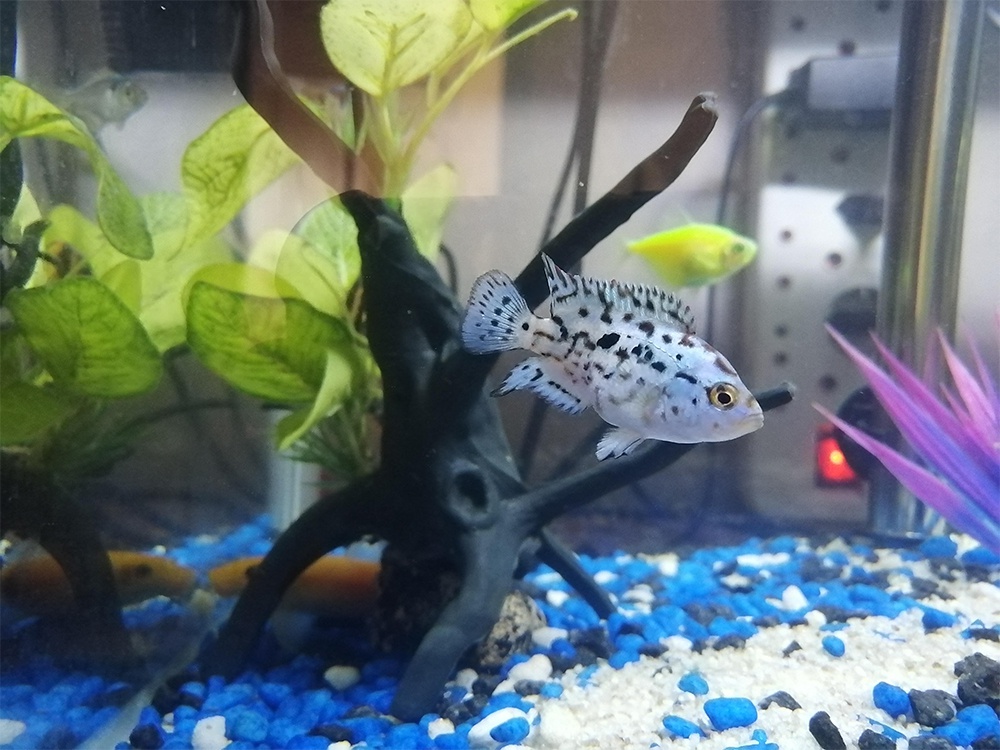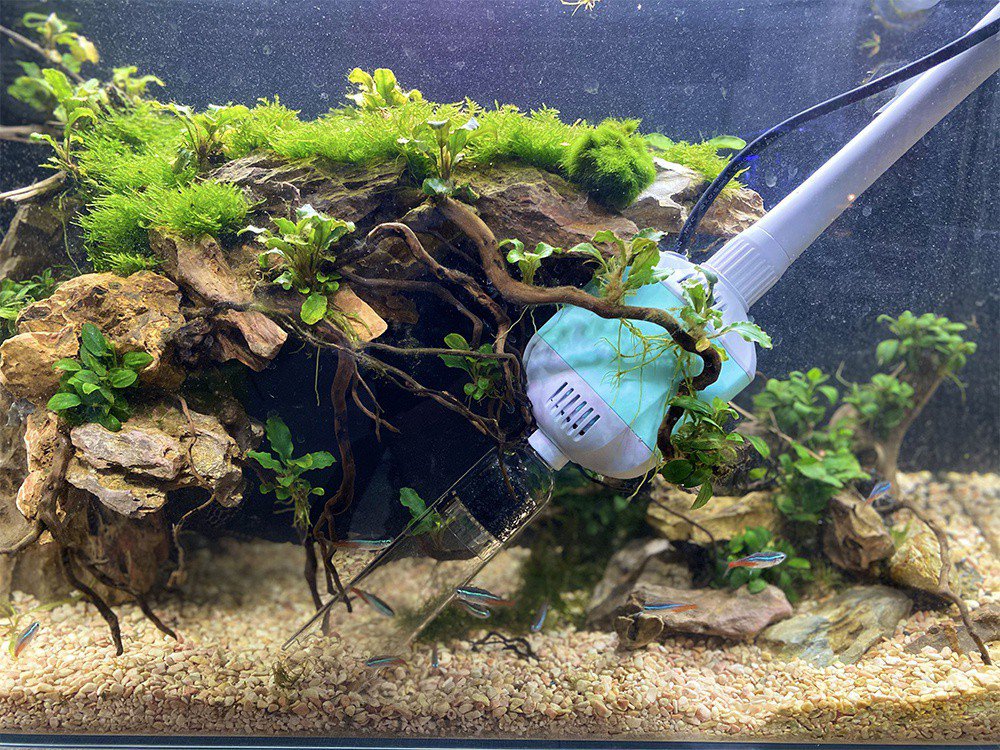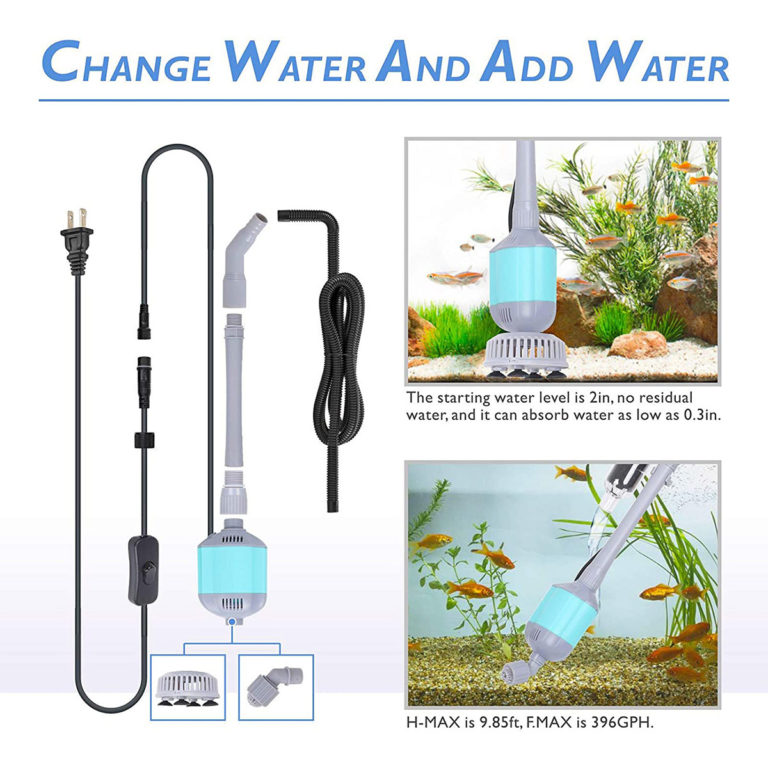Using a Gravel Vacuum to Clean Aquariums
More and more people like to keep fish at home. There are many benefits of keeping fish, fish tank fish not only can decorate the interior but also can add some live atmosphere. Nowadays, the pace of life is very fast, and after a busy day of work, enjoying the fish at home can play a good role in relieving the mood. To keep the fish creative, we need to keep the aquarium on regular cleaning.
What’s needed to clean an aquarium?
One of the most common questions that we get asked about keeping fish is “Why clean aquariums?”. Regular cleaning will help reduce algae and mineral deposits and will make your job easier. Keeping your tank clean is also important for keeping it healthy. The reason for this is simple: a regularly cleaned tank will retain more oxygen and have a healthier ecosystem. If you’ve never cleaned your tank, you’ll end up wasting your time and energy.
To clean an aquarium, you’ll need to use a vacuum cleaner to remove debris and algae. You should also clean gravel and sand using a sponge filter. In addition, you’ll need to rinse carbon and filter pads, which contain beneficial bacteria. If you’re using chemicals, it’s best to replace the chemical filtration media every three to four weeks. Once you’ve cleaned the water, you can simply plug it back into the tank.
 You’ll want to clean the exterior glass of your aquarium as well as the hood, top, and lights. After you’ve done this, you’ll want to clean the filter media. Changing the filter media is also important. You should use a vinegar-based solution for this. This will kill off harmful bacteria and prevent your aquarium from smelling. But before cleaning the filter, you should wait two weeks. The reason for this is that filter media contains beneficial bacteria that replace the bacteria lost in the water. Changing it too soon could lead to ammonia buildup and the death of the remaining bacteria.
You’ll want to clean the exterior glass of your aquarium as well as the hood, top, and lights. After you’ve done this, you’ll want to clean the filter media. Changing the filter media is also important. You should use a vinegar-based solution for this. This will kill off harmful bacteria and prevent your aquarium from smelling. But before cleaning the filter, you should wait two weeks. The reason for this is that filter media contains beneficial bacteria that replace the bacteria lost in the water. Changing it too soon could lead to ammonia buildup and the death of the remaining bacteria.
Clean Aquariums Needed
Whether you plan to keep a few fish or a large display, you’ll need the proper equipment to keep your tank clean. First, you’ll need to test the water for waste compounds, such as nitrates. High levels of these compounds can be harmful to the fish, and you need to keep them below 40 ppm. You can use a water test kit to measure the number of nitrates in your water, and then know how much you’ll need to drain. If you don’t have a water test kit, you can also get one for your aquarium that has a built-in filter.
Once you’ve determined how much you’re willing to spend, you’ll want to buy the right equipment. A filter can be quite expensive, so you’ll want to find as much used equipment as you can. A good way to save money is to buy second-hand. You can also find some good equipment at car boots and local tip sales. The key is to learn as much as possible about the various types of equipment for aquariums, including the different types of water conditions.
There are several different pieces of equipment that you’ll need to properly clean your home aquarium. The basic piece of equipment you’ll need is a dedicated bucket. Don’t use it for anything else! It should have a siphon, water conditioner, algae scrubber, filter brush, and aquarium-safe glass cleaner. In addition, you may need a bucket for cleaning materials. Depending on the size of your aquarium, you may also need fertilizer or small scissors for trimming plants.
Electric Aquarium Vacuum and Manual Gravel Vacuum
When deciding which gravel vacuum to buy, make sure to determine the size of your tank before you start shopping. Larger aquariums will need a powerful electric aquarium vacuum, while small tanks will only need a manual model. You can also choose between an electric and siphon vacuum gravel cleaning. Here’s an overview of each type. Read on to find out what each one can do for your tank and what features they have.
A manual or electric aquarium vacuum will clean your gravel in seconds, without causing any damage to your aquarium’s plumbing. A manual model is recommended for smaller tanks. An electric model can clean a larger aquarium faster but will be harder to use for gravel that’s less than five millimeters thick. If your gravel is finer, you might want to consider an electric model.
A manual vacuum is a more cheap choice. The reason is that it requires more work. However, it does have several advantages, including the ability to reduce the number of water changes you need to do. It’s important to remember that an electric vacuum requires that the filter bag be completely submerged in water. A manual vacuum is more likely to come with instructions but is much less likely to come with them.
About Aquarium Gravel Cleaner
The Aquarium Gravel Cleaner is a vacuum that cleans gravel and substrate in a variety of aquariums. This model is ideal for larger fish tanks, as it features a high flow rate that allows for quick water changes. The pump is located at the end of the unit, allowing it to easily pick up particles while avoiding the bottom layer of gravel.
The filter bag collects dirt and particles, and the unit is easy to take apart and clean. It is a great investment for any home aquarium. Easy to use and comes with a host of accessories to help you get the job done. Each of the accessories has a specific purpose, and the user-friendly instructional video helps you learn how to use each one. And there is a pump that pumps 396 GPH, which is more than enough to clean the gravel in a large aquarium.
A great solution for cleaning a large aquarium with gravel. It can submerge up to 3 feet in depth and is powered by a wholly submersible copper motor. Its hard tubing is made of premium PC material, and the device includes an extension cord that makes it easier to use from a distance. The vacuum has two different suction nozzles, one for fine sand and one for coarse sand.
Guide: how to use a gravel vacuum
Before using a gravel vacuum, it is essential to know how to handle it. You can make this task easier by following some easy instructions. You need to place the device in a shallow pool or large area of gravel and let it sit there for a few minutes. Next, you should insert the siphon tube into the bucket. To release the water, you need to close the siphon tube with your thumb or finger. Then, you can move the tool up and down the tubing while preventing the debris from getting stuck in the bottom.

A gravel vacuum usually has a rigid solid tube that is connected to a thinner, longer aquarium tube. A flexible tube is attached to the cap. You can use the gravel vacuum to clean the tank, including water changes. A gravel cleaner with an extension tube can clean tanks up to 28 inches deep and is safe to use in saltwater. You should always use gravel vacuuming on a substrate that is at least two mm thick.
The suction tube of a gravel vacuum can be set on a high or low setting. A higher setting will allow the filter to clean more thoroughly, and a lower setting will make the vacuum less effective. This filter is easy to use and comes with two settings for maximum suction power. You need to place the vacuum in the bottom third of your aquarium before using it. The gravel vacuum must be placed in the gravel as deep as possible to extract the debris.
Different accessories have different functions, such as the brush head, which can clean the dirt on the wall of the fish tank; the 45° Corner Suction Inlet, to help you block the landscape sand in the fish tank when changing water; Duckbill Suction Inlet (Debris vacuum), clean up fish stools and residues at the bottom of the fish tank.
Sometimes different accessories can be used together to produce better results. For example, when you want to remove debris, use a debris vacuum to absorb fish waste and other debris, then use a brush head to clean the dirt into the filter.
We also can take sand washing heads and sand vacuums as another example. When you want to wash sand, you can use a sand washing head to wash large gravels, then use a sand vacuum to quickly wash sand, and separate, and remove debris. In short, we should use these tools regularly and selectively, depending on the situation.
Conclusion
Aquarium fish must be “clear water” fish, so “keep the water clarified” is the first task, be sure to choose the right cleaning tools. The different aquarium needs different tools. For example, freshwater tanks, coral tanks, fish tanks that need to clean rocks, or fish tanks that need to clean water plants. According to the characteristics of different aquariums choose the right cleaning tools, and a combination of different tools to clean different content, so that cleaning aquatic work becomes easier.

